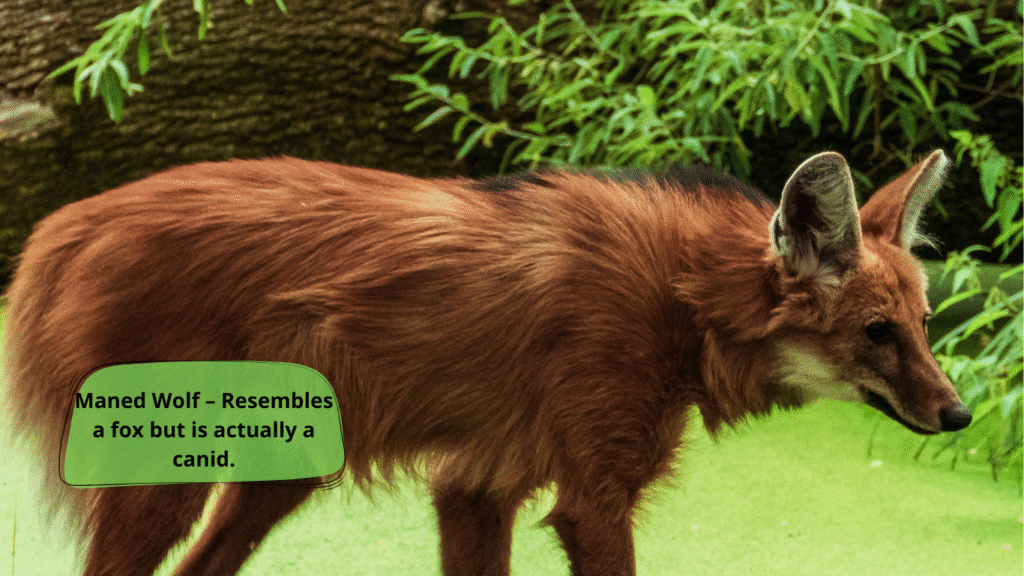Maned Wolf: South America’s Mysterious and Majestic Fox-on-Stilts
The Maned Wolf (Chrysocyon brachyurus) is one of the most captivating and misunderstood animals of South America. Often mistaken for a fox or wolf, this long-legged, red-coated mammal is neither. In fact, it belongs to its own unique genus, making it an evolutionary standout. With its striking appearance and solitary nature, the maned wolf is a rare gem of the animal kingdom.

What Is a Maned Wolf?
Despite its name, the maned wolf is not a true wolf. It is the largest canid of South America, characterized by:
- Long, slender legs adapted for navigating tall grasses
- A reddish-gold coat with black markings on the legs and snout
- A distinct black mane that stands upright when threatened
- Large, fox-like ears used for detecting prey
Its body structure has earned it the nickname “fox on stilts.”
Where Do Maned Wolves Live?
Maned wolves are native to central and eastern South America, primarily found in countries such as:
- Brazil
- Paraguay
- Bolivia
- Northern Argentina
- Southeastern Peru
They prefer open habitats like savannas, grasslands, and scrub forests, where they can roam freely and hunt effectively.
Behavior and Diet
Maned wolves are solitary and shy, most active during dawn and dusk (crepuscular). Unlike pack animals, they mark territory with strong-smelling urine and communicate through loud, bark-like vocalizations.
Their diet is omnivorous, consisting of:
- Small mammals (rodents, rabbits)
- Birds and reptiles
- Insects
- Fruits and vegetables
One key food item is the wolf apple (Solanum lycocarpum), a tomato-like fruit that makes up a large part of their diet and supports digestive health.
Unique Adaptations
- Long legs: Help them spot prey above tall grass.
- Keen sense of smell and hearing: Essential for nocturnal foraging.
- Solitary lifestyle: Reduces competition for resources.
These traits have evolved to help them survive in open, grassy environments where stealth and visibility are crucial.
Conservation Status
The Maned Wolf is currently classified as Near Threatened by the IUCN. Threats include:
- Habitat loss due to agriculture and urbanization
- Road accidents
- Disease from domestic dogs
- Illegal hunting
Several conservation programs are underway in Brazil and Argentina to protect habitats, educate the public, and research the species.
Why the Maned Wolf Matters
The Maned Wolf plays an important role in its ecosystem by controlling rodent populations and dispersing seeds from the fruits it eats. As a flagship species, its conservation helps protect other wildlife in the same habitat.
Fun Facts About the Maned Wolf
- It can run up to 45 mph (72 km/h).
- Its urine smells like cannabis due to specific chemicals.
- Despite its appearance, it doesn’t bark like a dog—instead, it lets out deep, resonant “roar-barks.”
Conclusion
The Maned Wolf is an elegant and mysterious symbol of South America’s wild heart. Its unique blend of fox, wolf, and deer-like features make it one of the most visually and ecologically fascinating animals in the world. Protecting the maned wolf means preserving the intricate balance of the savanna ecosystems it calls home.








